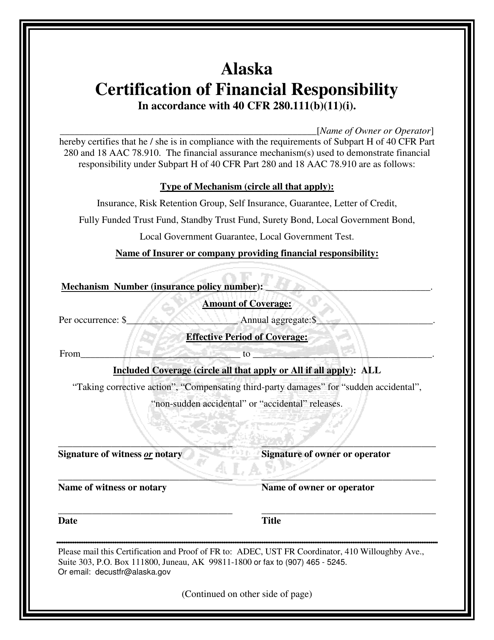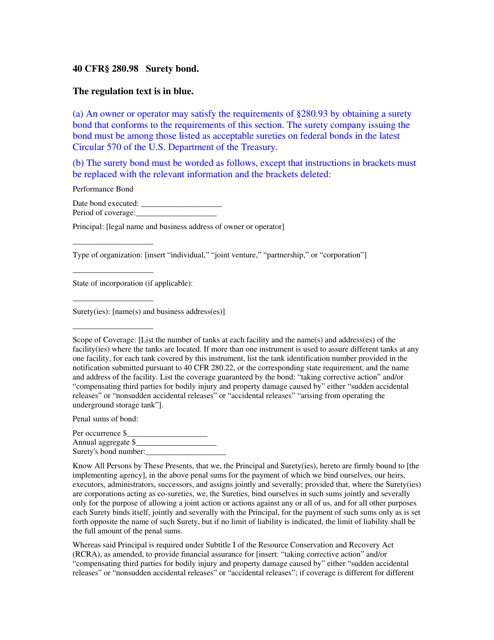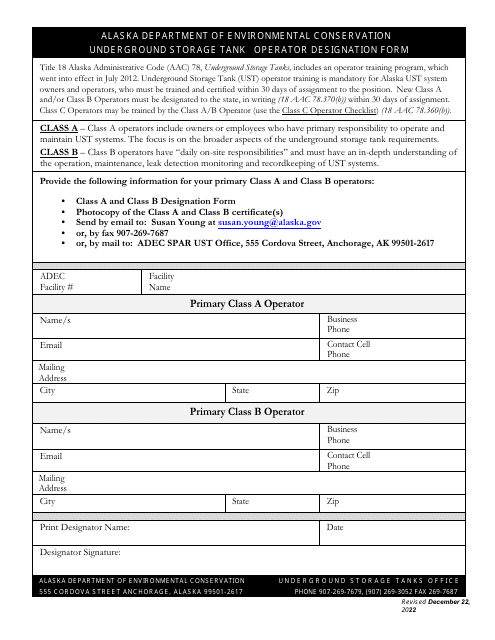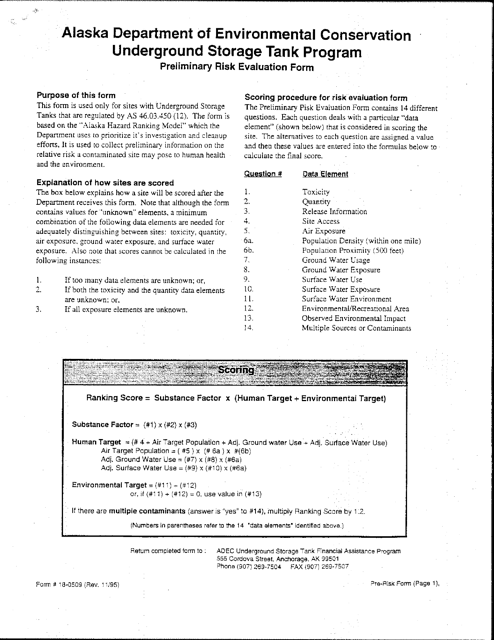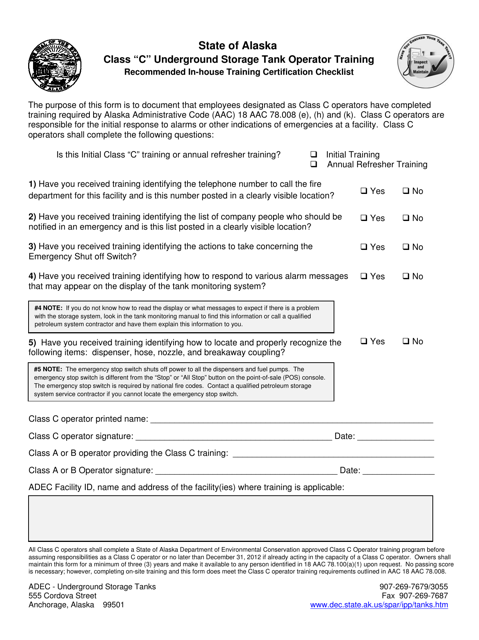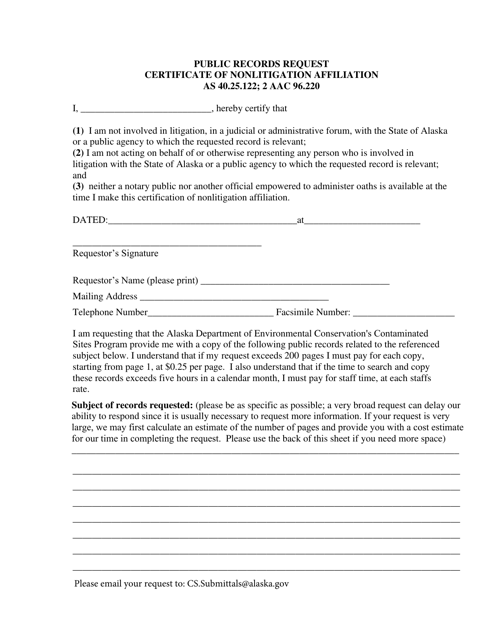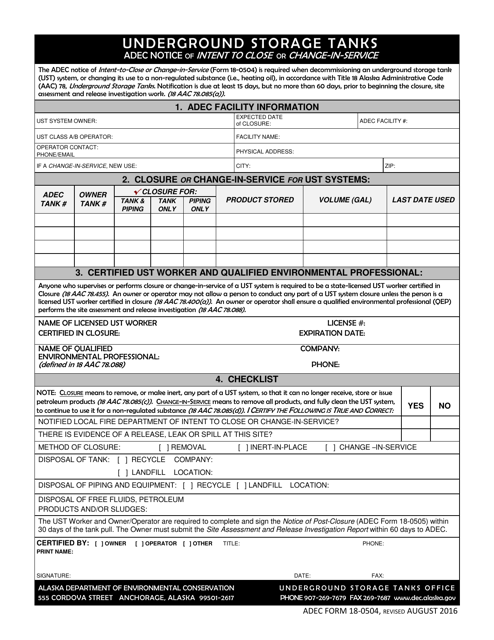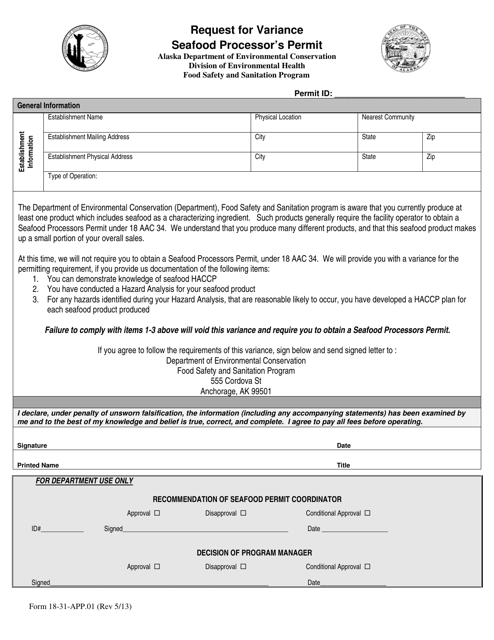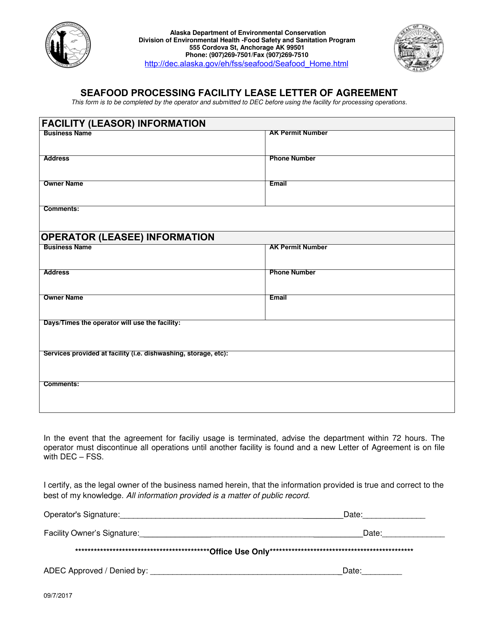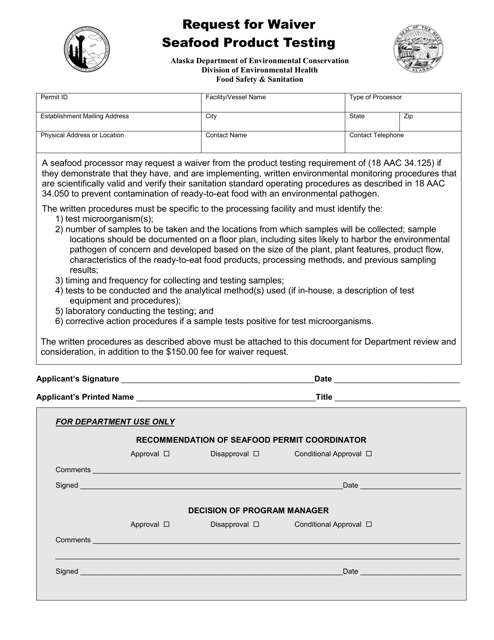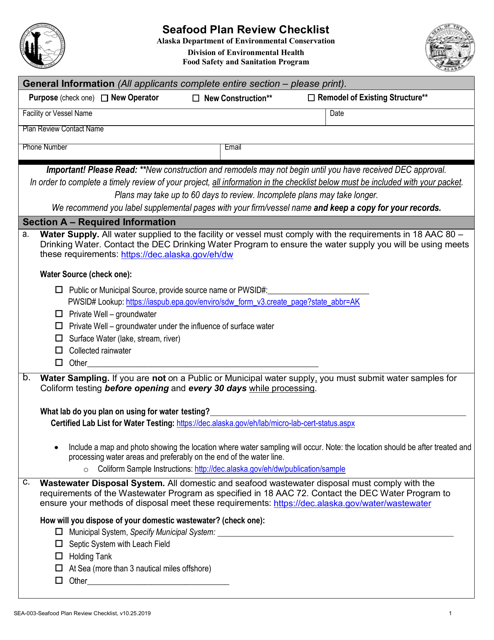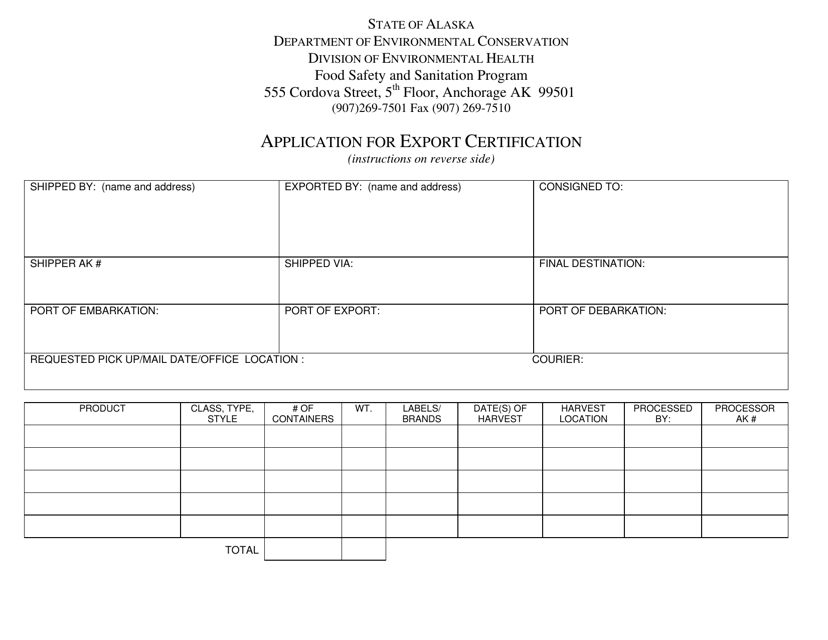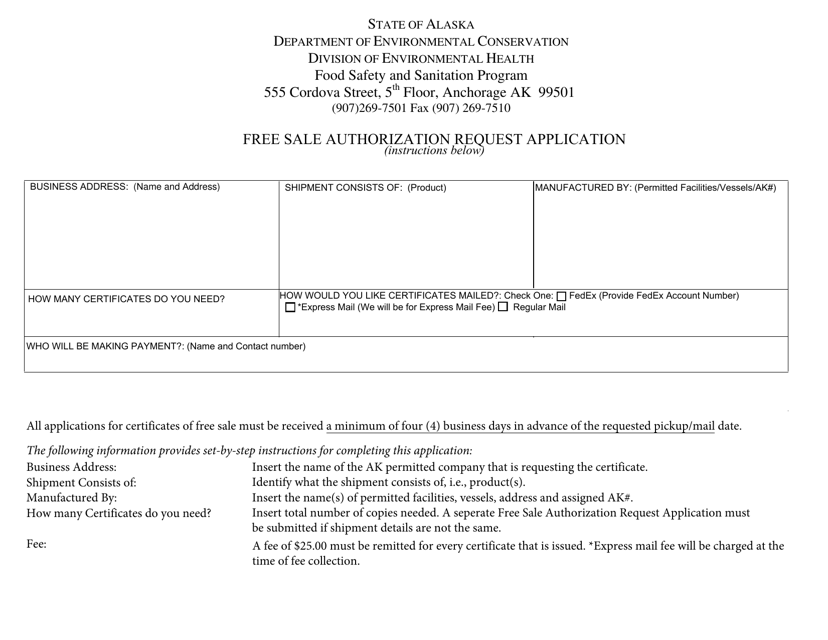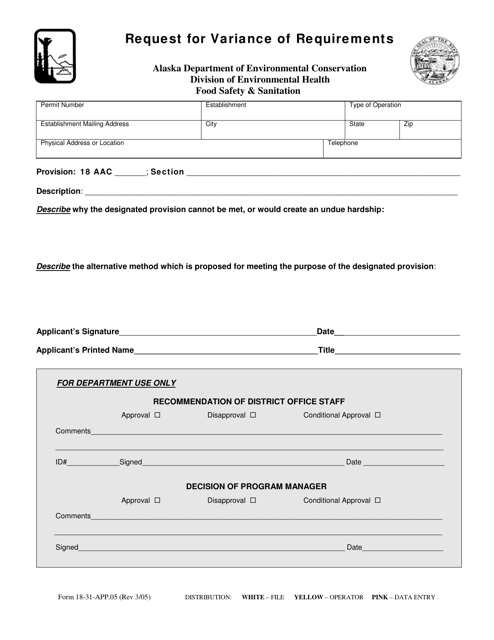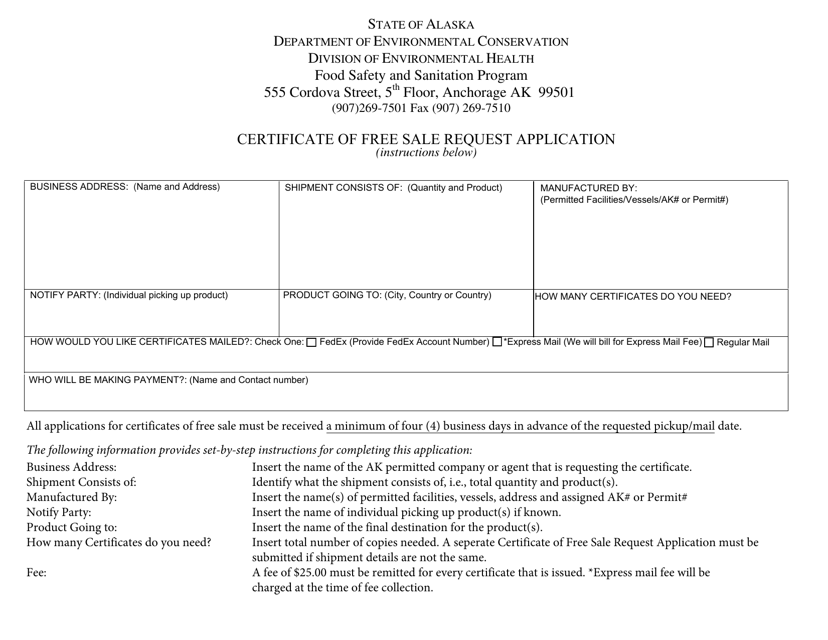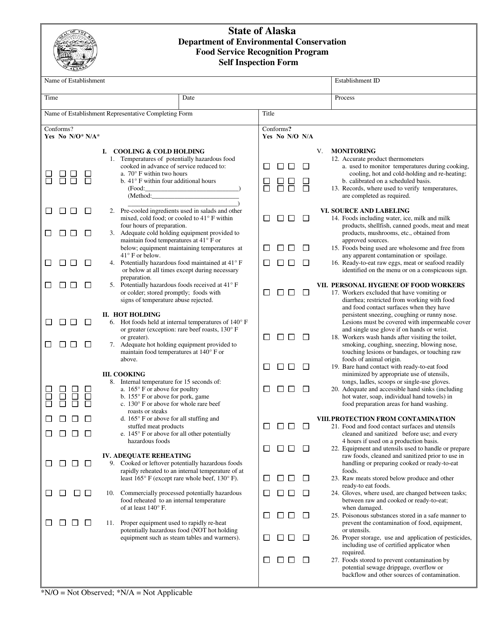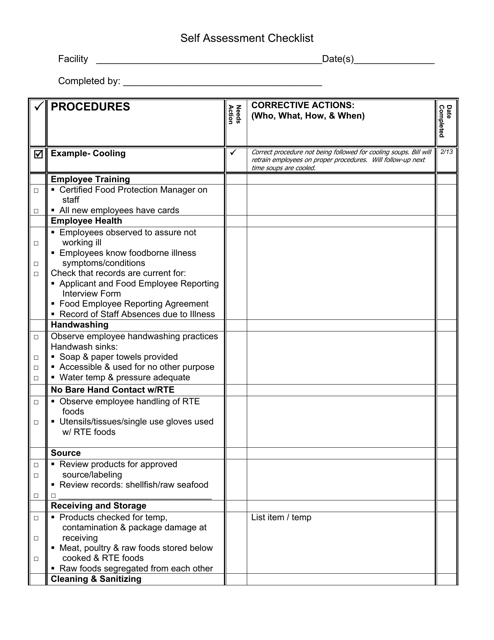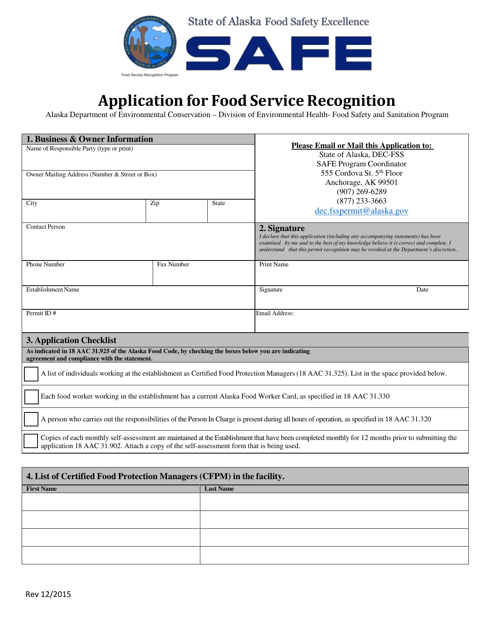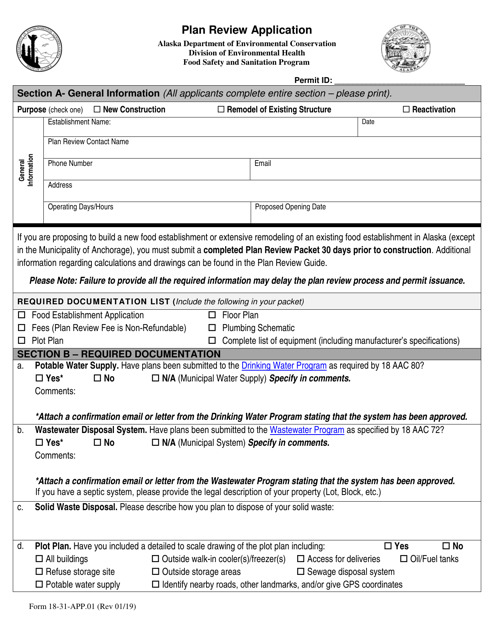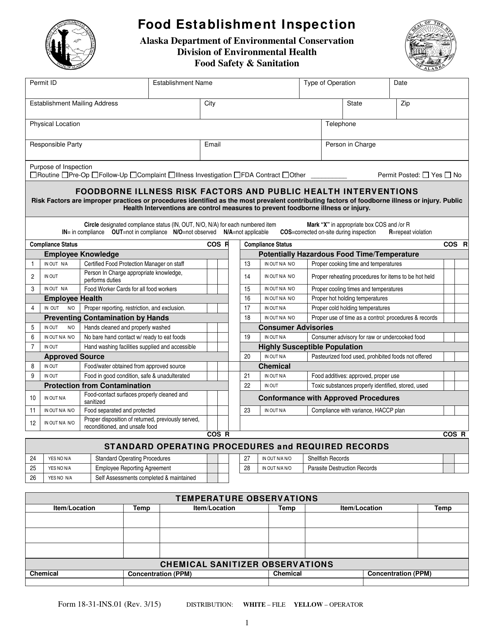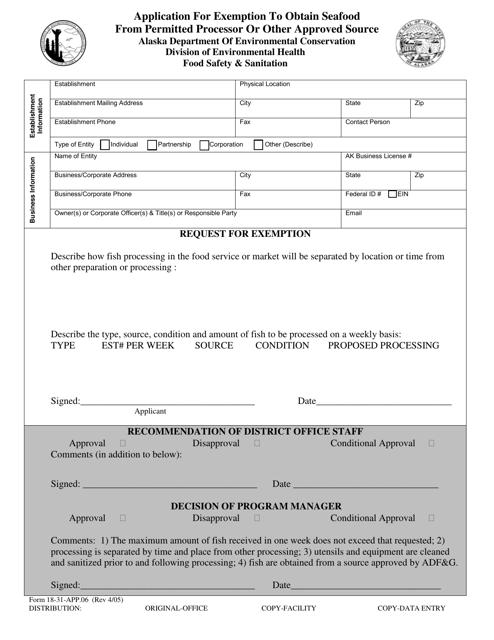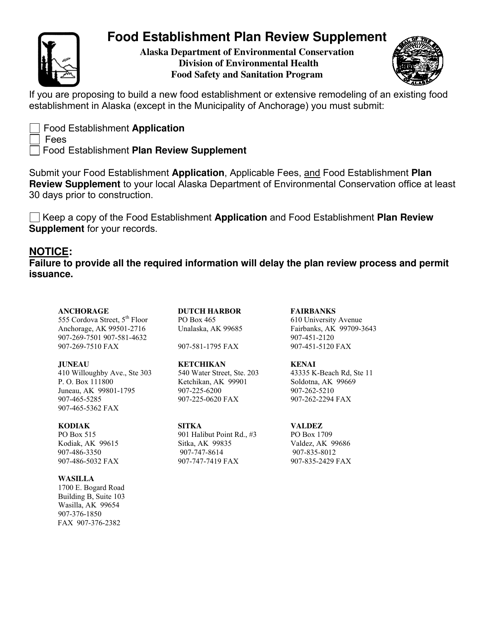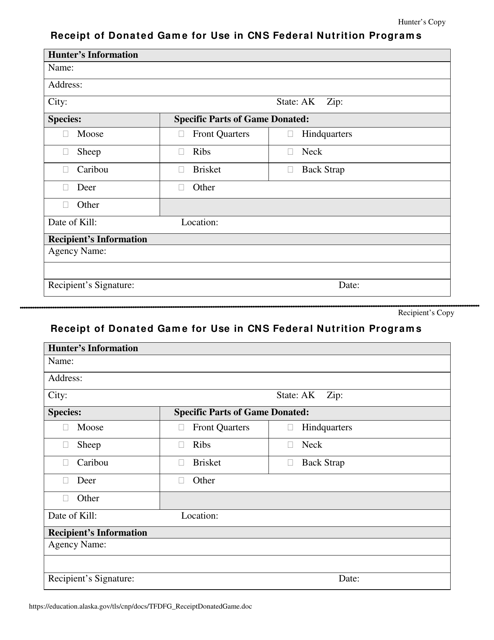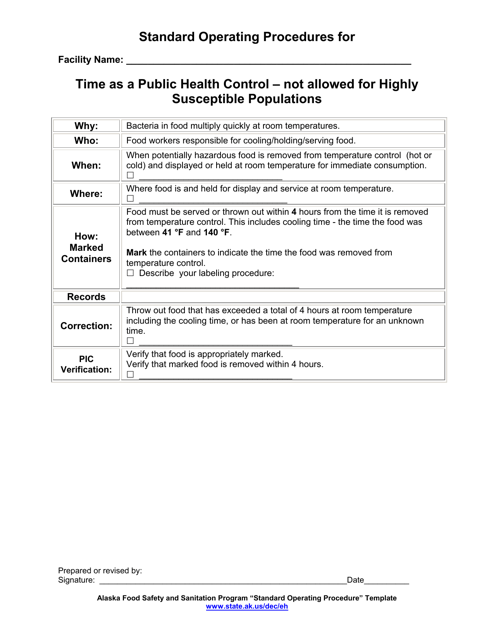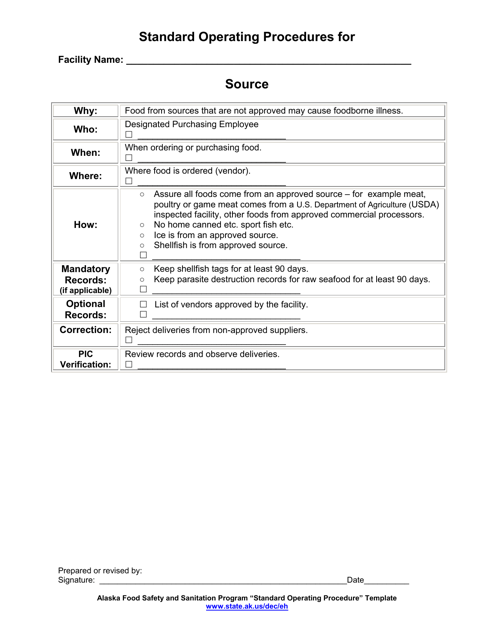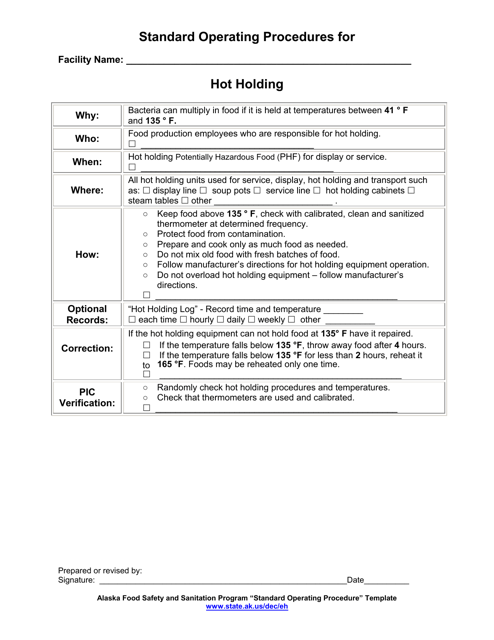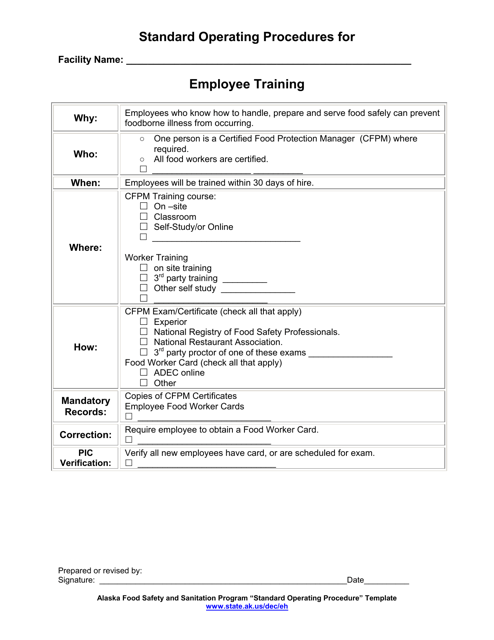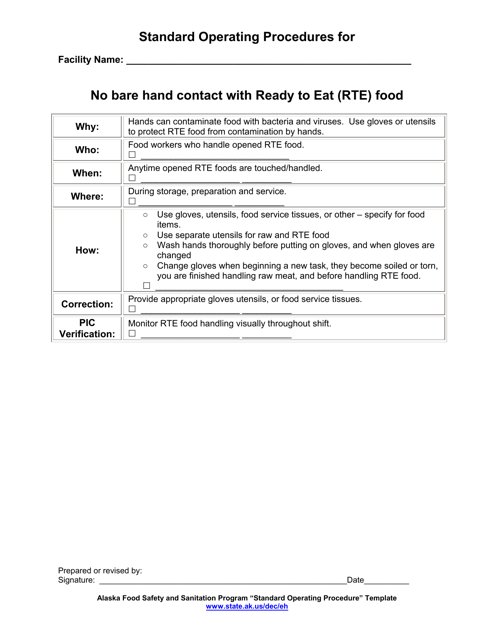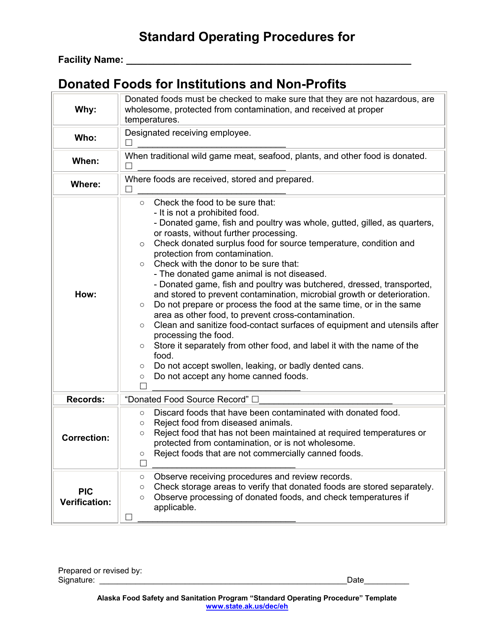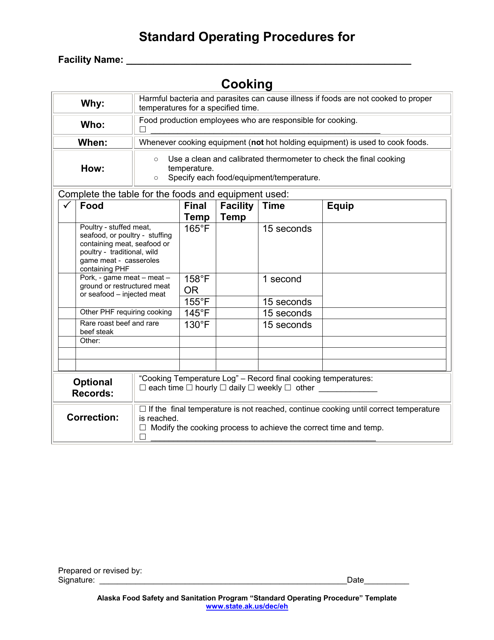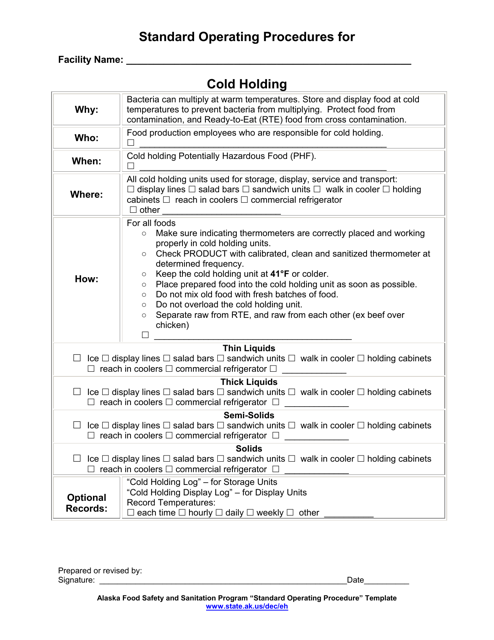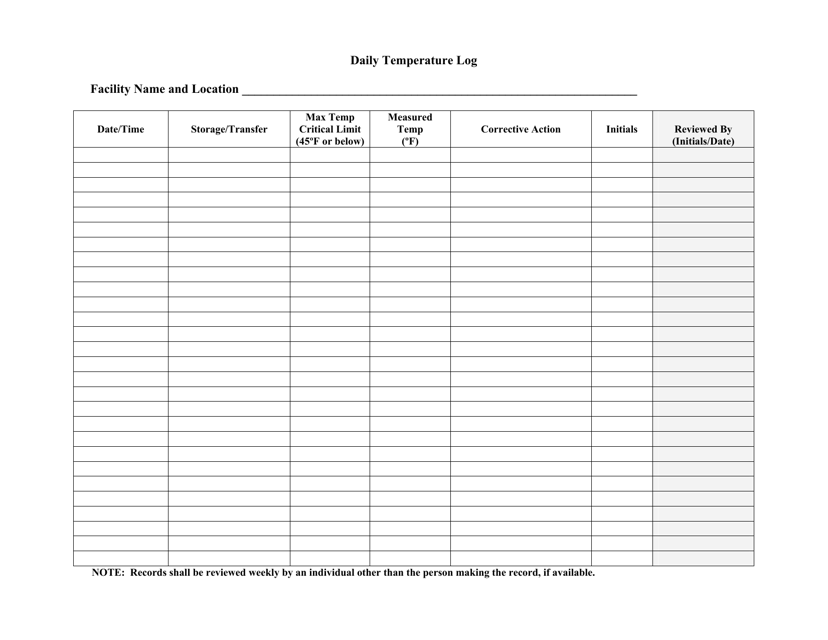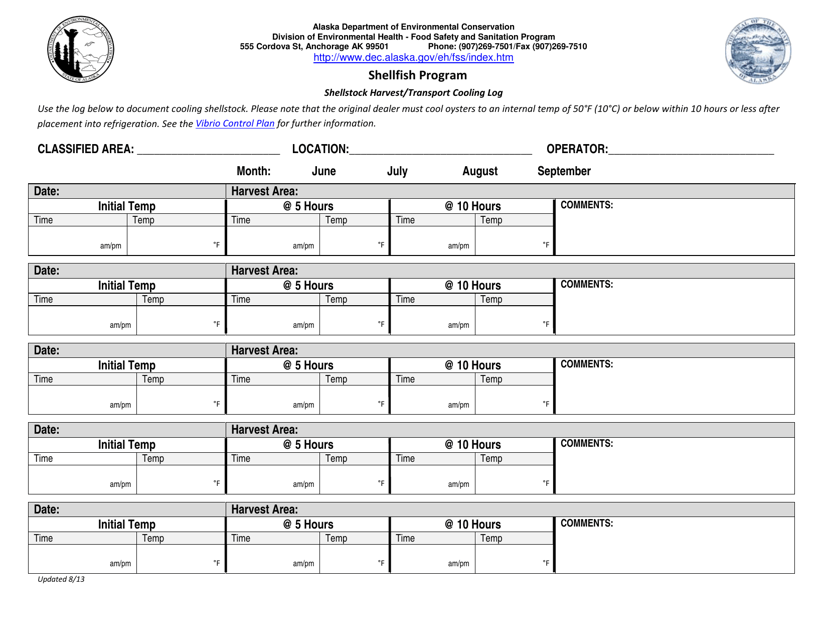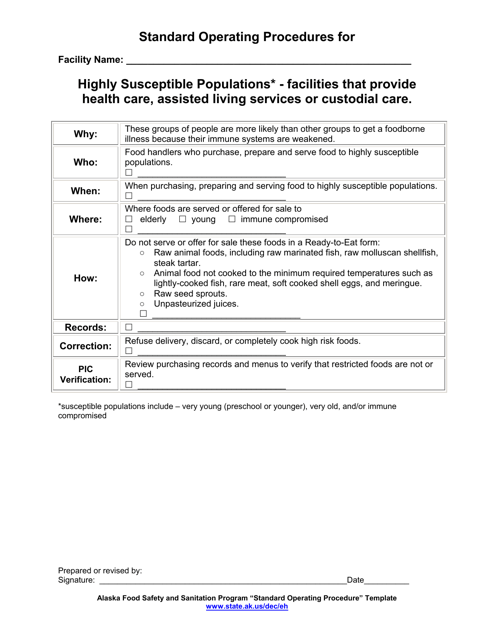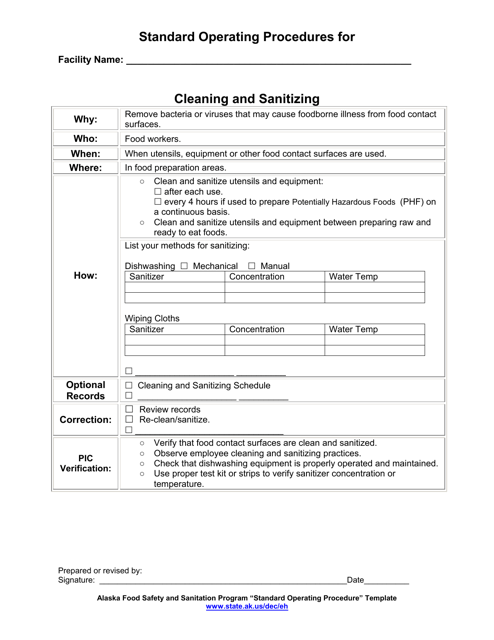Alaska Department of Environmental Conservation Forms
Documents:
123
This document certifies that an individual or entity in Alaska has met the required financial obligations. It demonstrates their ability to fulfill their financial responsibilities in various situations.
This document is for obtaining a surety bond in Alaska, as required under 40 CFR 280.98.
This form is used for conducting a preliminary risk evaluation in Alaska. It helps to assess and identify potential risks in a given situation or project.
This checklist is used to recommend in-house training and certification for Class "C" Underground Storage Tank Operators in Alaska. It ensures compliance with regulations and prepares operators to efficiently and safely handle underground storage tanks.
This document is used for requesting public records in Alaska. It certifies that there is no ongoing litigation involving the person making the request.
This form is used for notifying the Alaska Department of Education & Early Development (ADEC) about an intent to close or make changes to a service provided by an educational institution.
This form is used to notify the Alaska Department of Environmental Conservation (ADEC) of the intent to install or reconfigure a facility or system.
This form is used for requesting a variance seafood processor's permit in Alaska.
This document is a letter of agreement specifically for leasing a seafood processing facility in Alaska. It outlines the terms and conditions of the lease agreement between the property owner and the lessee.
This form is used for requesting a waiver for seafood product testing in Alaska.
This Form is used for reviewing seafood plans in Alaska.
This form is used for applying for an export certification in Alaska. It is required when exporting goods from Alaska to other countries.
This Form is used for requesting authorization to sell a product without a license in the state of Alaska.
This form is used for requesting a variance of requirements in the state of Alaska.
This Form is used for requesting a Certificate of Free Sale in Alaska. This document certifies that the products listed are legally sold in the United States without any restrictions.
This Form is used for conducting self inspections of food service establishments participating in the Food Service Recognition Program in Alaska. It helps ensure that the establishments are complying with health and safety regulations.
This document is a self-assessment checklist specifically designed for individuals in Alaska. It helps individuals assess their own knowledge, skills, or compliance with certain regulations or requirements in Alaska.
This form is used for applying for recognition as a food service provider in Alaska.
This form is used for submitting a Plan Review Application in Alaska.
This form is used for conducting inspections of food establishments in Alaska. It helps to ensure that these establishments are meeting the required standards for food safety and sanitation.
This form is used for applying for an exemption to obtain seafood from a permitted processor or other approved source in Alaska.
This document provides additional information and requirements for the plan review process of food establishments in Alaska.
This document is used for the application process to become a shellfish dealer in Alaska. It provides instructions on how to complete the Form SHELL-016-ADEC and apply for the necessary permits and licenses.
This document is used to acknowledge the receipt of a donated game for use in the CNS Federal Nutrition Programs in Alaska.
This document outlines the procedures for using time as a public health control in Alaska. It provides guidelines on how to safely handle and store perishable food items without refrigeration for a certain period of time.
This document provides a set of guidelines and instructions for the proper handling and sourcing of materials in Alaska.
This document provides guidelines and instructions for properly hot holding food in Alaska, ensuring safe temperatures and preventing contamination.
This document for Alaska provides standard operating procedures for employee training in various organizations and industries. It outlines guidelines and processes for training new employees and ensuring they acquire the necessary skills and knowledge to perform their job duties effectively.
This document outlines the Standard Operating Procedures for ensuring that there is no direct contact between bare hands and ready-to-eat (RTE) food in Alaska. It provides guidelines and steps to ensure food safety.
This document provides guidelines and instructions for proper handwashing procedures in Alaska. It outlines the standard operating procedures to follow in order to maintain hygiene and prevent the spread of germs and infections.
This document provides guidelines and procedures to ensure the health and safety of employees in the state of Alaska.
This document provides standard operating procedures for handling and distributing donated foods in institutions and non-profit organizations in Alaska.
This document provides guidelines and instructions for cooking in Alaska, ensuring safe and efficient food preparation in the challenging Arctic environment.
This document outlines the standard operating procedures for issuing consumer advisories in Alaska. It provides guidelines and instructions to ensure that accurate and timely information is conveyed to consumers regarding potential risks or issues with products or services.
This document provides guidelines and instructions for safely storing food at cold temperatures in Alaska. It outlines the proper procedures for cold holding to maintain food quality and prevent bacterial growth.
This document is used to record the daily temperatures in Alaska.
This document is used to track the cooling process of shellfish during harvest and transportation in Alaska.
This document provides guidelines and protocols for handling highly susceptible populations in Alaska to ensure their safety and well-being. It outlines standardized operating procedures that should be followed to effectively cater to the unique needs and vulnerabilities of these populations.
This document provides guidelines and instructions for cleaning and sanitizing procedures in Alaska. It outlines the standard operating procedures to ensure a clean and safe environment.

